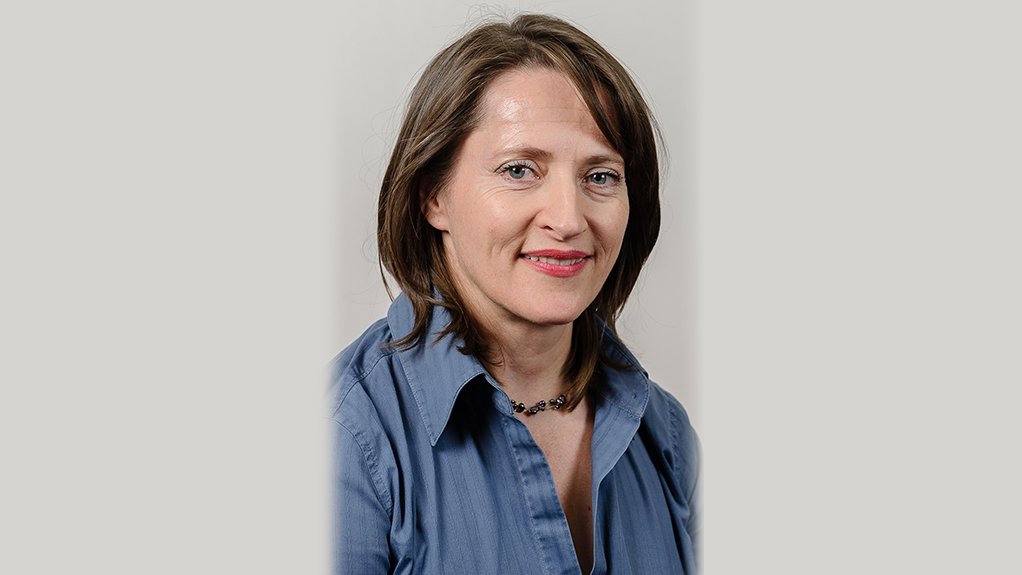Green buildings rising


ALISON GROVES While the demand for new green buildings continues to grow, it will not replace the importance of the existing building stock
As the Green Building Council of South Africa (GBCSA) introduces more rating tools, the construction industry’s uptake of green building is “sky rocketing”, says professional services firm WSP Africa building services regional director Alison Groves.
The GBCSA developed the Green Star South Africa rating tools to provide an objective measurement for green buildings in South Africa and Africa. These tools recognise and reward environmental leadership in the property industry.
The Green Star tools are created for each building type and support design professionals and developers in creating a better built environment for people and the environment. The tools are based on nine categories, each with a range of credits that address environmental and sustainability aspects of designing, constructing and operating a building.
The uptake can be seen throughout Africa, where the GBCSA has been playing an active role over the past few years in assisting with the establishment of green building councils (GBCs) north of South Africa’s borders.
GBCs are prospective or emerging in Namibia, Mauritius, Morocco, Rwanda, Tanzania, Egypt, Kenya and Ghana. Three buildings have been accredited under the Green Star ratings credentials in Namibia, and one each in Rwanda, Kenya and Ghana.
“This progressive uptake is not surprising, as the industry’s shift to embrace sustainable practices has a proven and significant economic business case,” notes Groves.
She adds that the shift is also largely being driven by continuously increasing pressure within the built environment sector to address inadequate energy resources, meet carbon reduction targets and comply with revised building energy efficiency standards.
According to the United Nations (UN) 2018 Global Status Report – Towards a Zero-Emission, Efficient and Resilient Buildings and Construction Sector, the built environment accounts for 39% of global carbon emissions. A previous version of the report from the UN also confirmed that this figure continues to rise by around 1% each year.
“In response to this and the commitments made by numerous governments to reduce their carbon emissions, green building design has become integral in the design and construction of buildings in many parts of the world, including Africa,” says Groves.
“In addition to tightening building energy efficiency standards, developers who work in African markets are often also faced with compounding pressure to address challenges around aging and inadequate network infrastructure and/or insufficient energy and water resources. Aspiring to incorporate climate responsive design into new and refurbishment building projects innately lends itself to being mindful of potential resource constraints and future weather assaults that may impact comfort and safety of buildings.”
Groves adds that these design adoptions are financially beneficial, owing to reduced energy consumption.
Using renewable and more sustainable energy resources also has the “propensity to reduce the carbon emissions emitted by these buildings and provide increased resilience amid uncertain service delivery”.
She notes that green design elements may vary among buildings, but will, at the very least, be similar in terms of the materials used in construction, energy efficiency – using natural light and floor air flow that could decrease the use of artificial lighting and air-conditioning – as well as water use and waste-to-landfill considerations.
Previously, an architect was brought in first when designing a new building project, followed by the consulting engineers and sustainability consultants at a later stage to work from the designs and assess feasibility for the structure and sustainability elements, explains Groves.
However, more frequently – on both new and refurbishment building projects – the full design team, including the engineering and sustainability consultants, are being engaged in the early concepts for the building and throughout the design process, she says.
“This is beneficial for the entire design team – the earlier sustainability is considered for a project, the better positive impacts and results for the most efficient building possible can be achieved.”
Groves says that in Africa, the social agenda is maturing at a rapid pace and “cookie-cutter solutions of the past have now made way for more mature and in-depth engagement,” adding that “as market awareness grows, so too does exposure for the skills that exist within the continent that can develop and drive unique or customisable and sustainable building design solutions for different markets and climates on the continent”.
Opportunities to make a difference, and foster and support a green economy exist within every project or business initiative.
“As such, it is conceivable that in the future, the rest of the world may be looking to Africa for original solutions, experiences and expertise in the careful balancing act of optimising social equity, economic prosperity and environmental stewardship.”
Article Enquiry
Email Article
Save Article
Feedback
To advertise email advertising@creamermedia.co.za or click here
Comments
Announcements
What's On
Subscribe to improve your user experience...
Option 1 (equivalent of R125 a month):
Receive a weekly copy of Creamer Media's Engineering News & Mining Weekly magazine
(print copy for those in South Africa and e-magazine for those outside of South Africa)
Receive daily email newsletters
Access to full search results
Access archive of magazine back copies
Access to Projects in Progress
Access to ONE Research Report of your choice in PDF format
Option 2 (equivalent of R375 a month):
All benefits from Option 1
PLUS
Access to Creamer Media's Research Channel Africa for ALL Research Reports, in PDF format, on various industrial and mining sectors
including Electricity; Water; Energy Transition; Hydrogen; Roads, Rail and Ports; Coal; Gold; Platinum; Battery Metals; etc.
Already a subscriber?
Forgotten your password?
Receive weekly copy of Creamer Media's Engineering News & Mining Weekly magazine (print copy for those in South Africa and e-magazine for those outside of South Africa)
➕
Recieve daily email newsletters
➕
Access to full search results
➕
Access archive of magazine back copies
➕
Access to Projects in Progress
➕
Access to ONE Research Report of your choice in PDF format
RESEARCH CHANNEL AFRICA
R4500 (equivalent of R375 a month)
SUBSCRIBEAll benefits from Option 1
➕
Access to Creamer Media's Research Channel Africa for ALL Research Reports on various industrial and mining sectors, in PDF format, including on:
Electricity
➕
Water
➕
Energy Transition
➕
Hydrogen
➕
Roads, Rail and Ports
➕
Coal
➕
Gold
➕
Platinum
➕
Battery Metals
➕
etc.
Receive all benefits from Option 1 or Option 2 delivered to numerous people at your company
➕
Multiple User names and Passwords for simultaneous log-ins
➕
Intranet integration access to all in your organisation















